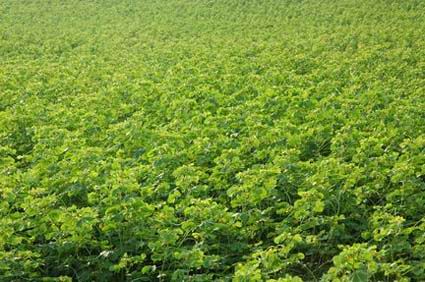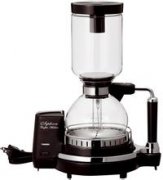Coffee is one of the most popular drinks in the world.
I.
Coffee (Coffee) is one of the most popular drinks. Coffee is consumed by 1x3 people all over the world. Besides tea, coffee is the most consumed drink. According to the statistics of the International Coffee Organization, the world consumes about 5.4 million tons of coffee every year. The countries that import the most coffee are the United States, Germany, Italy and Japan. However, Scandinavian countries consume more than 10 kilograms of coffee per capita per year, ranking among the highest in the world.
The coffee tastes really good, make a cup, the room is fragrant. However, coffee is not a traditional drink for westerners. According to textual research, coffee was introduced into Europe from Ethiopia through the Arab region. In the 7th century AD, some Arabs went into exile to Ethiopia. They found a new drink here that they had never heard of-what locals call "Buna". At that time, only a small number of people in Ethiopia drank it. The Arabs who have taken refuge here are friends of Mohamed, the founder of Islam. When they returned home, they also brought back the habit of drinking "Buna".
Arabs call the new drink "Qahwah" or "Kefa", the phonetic variation of the "Kaffa" province where coffee is produced. This drink quickly spread among followers of Islam. By the 15th century AD, coffee was grown in Yemen. Yemeni authorities encourage people to drink coffee because it is less stimulating and exciting than Kat.

Coffee garden
The coffee shop "kavel kanes" first appeared in the Islamic resort of Mecca. This kind of coffee shop soon spread all over the Arab world and became a place for people to play chess, chat, sing, dance and listen to music. Coffee shop is a brand new thing, in which people can socialize and discuss business. The coffee shop soon became the center of political activity and was suppressed. In the decades that followed, coffee and coffee houses were banned many times. However, it reappeared soon after the ban. It can be said that despite the incineration of the wildfire, the spring breeze still flourishes. Finally, it was only after the government imposed a tax on coffee and coffee shops that it was able to survive.
Over time, the Arab empire began to decline, and part of the territory was occupied by the emerging Ottoman Turks. The Turks also soon learned to drink coffee. They call the new drink "Qahwe" or Kave. Later, Turks also became Muslims and, according to Islamic rules, were not allowed to drink alcohol. As a result, they double their diagnosis of this slightly irritating drink. The Turks brought the habit of drinking coffee to Istanbul, the heart of the Ottoman Empire.
At that time, a number of Italian city-state states were trading with eastern countries. Genoa has set up a trading post in Pera, opposite Istanbul, and has been looking for profitable oriental goods. It was Venice merchants who introduced coffee and coffee drinking habits to Europe in 1615. Italians call coffee "Cafe".
For quite a long time, Turks and Arabs monopolized the coffee trade and banned the export of raw coffee beans. The so-called coffee beans are the seeds of coffee trees. If the outer skin of the seeds is peeled off, they can no longer germinate. But Arabs don't have a good time for coffee monopolies. Later, the Dutch managed to get coffee saplings or coffee seeds and brought them back to the greenhouse in Holland for cultivation. The Dutch first brought coffee to the Malabar coast of India and introduced it to Batavia (present-day Jakarta) on the island of Java in 1699. A few years later, the Dutch colonies became a major supplier of European coffee.
Important Notice :
前街咖啡 FrontStreet Coffee has moved to new addredd:
FrontStreet Coffee Address: 315,Donghua East Road,GuangZhou
Tel:020 38364473
- Prev

The skill of smelling fragrance and watching color coffee and drinking coffee
You can add a little sugar and milk to the pure black coffee; you can also add spices such as cinnamon to the coffee as in Africa and Arabia; if you are not used to the bitter taste of coffee, you can also add a little juice you like to your coffee, but if you drink a cup of authentic black coffee, you can taste the rich flavor of the coffee itself, which will be seen as tasting coffee
- Next

Coffee bean production place of Ethiopian coffee fragrance
Ethiopia in East Africa means the land inhabited by people tanned by the sun in ancient Greek. Ethiopia's unique cultural tradition, spectacular scenery, pleasant climate, rich animal and plant resources, important places of interest, hospitality and friendly people make it one of the major tourist destinations in Africa. The name Coffee comes from kaffa in Ethiopia, you know.
Related
- Beginners will see the "Coffee pull flower" guide!
- What is the difference between ice blog purified milk and ordinary milk coffee?
- Why is the Philippines the largest producer of crops in Liberia?
- For coffee extraction, should the fine powder be retained?
- How does extracted espresso fill pressed powder? How much strength does it take to press the powder?
- How to make jasmine cold extract coffee? Is the jasmine + latte good?
- Will this little toy really make the coffee taste better? How does Lily Drip affect coffee extraction?
- Will the action of slapping the filter cup also affect coffee extraction?
- What's the difference between powder-to-water ratio and powder-to-liquid ratio?
- What is the Ethiopian local species? What does it have to do with Heirloom native species?

